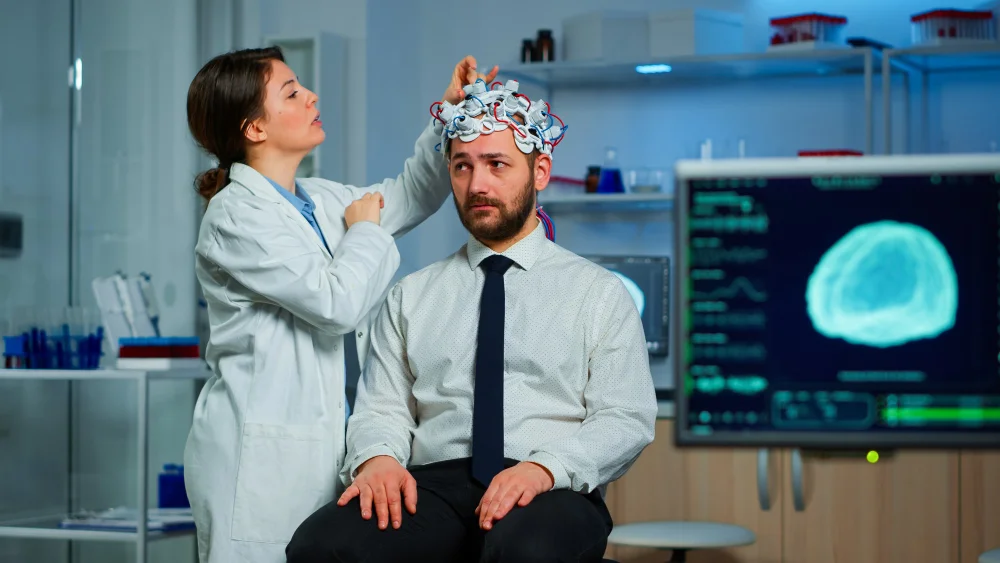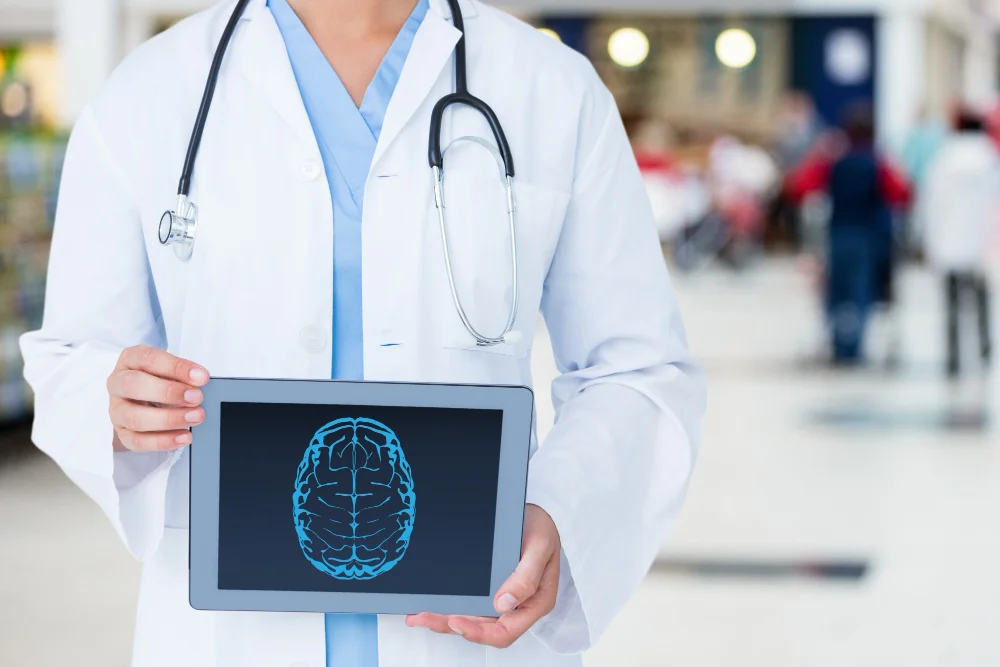When considering mental health treatment options, patients and healthcare providers must weigh the benefits and limitations of various interventions. This comprehensive comparison examines TMS therapy alongside other treatments for mental health, including medications, psychotherapy, and brain stimulation techniques, helping individuals make informed decisions about their treatment path.
The comparison between TMS and other treatments becomes particularly relevant for individuals who have not achieved satisfactory results with conventional approaches or who experience intolerable side effects from medications. Understanding these differences helps patients and providers develop comprehensive treatment plans that maximize therapeutic benefits while minimizing unwanted effects.
Comparing TMS to Traditional Treatments
TMS vs Medication
The comparison of TMS vs other treatments often begins with examining how TMS differs from psychiatric medications. Antidepressants work by altering neurotransmitter levels throughout the entire body, while TMS provides targeted brain stimulation to specific regions involved in mood regulation.
Medications can cause systemic side effects, including weight gain, sexual dysfunction, digestive issues, and sleep disturbances. These effects often persist as long as patients continue taking the medication. In contrast, TMS side effects are typically limited to mild scalp discomfort and temporary headaches that resolve shortly after each session.
The time frame for seeing results also differs between these approaches. While some antidepressants may take 6-8 weeks to show full effects, TMS therapy often produces noticeable improvements within 2-4 weeks of starting treatment.
TMS vs Psychotherapy
Psychotherapy and TMS therapy address mental health from different angles, making their comparison unique among TMS vs other treatments discussions. Psychotherapy helps individuals develop coping strategies, process emotions, and modify thought patterns, while TMS directly influences brain activity in regions associated with mood regulation.
The timeline for therapeutic benefits differs significantly between these approaches. Psychotherapy typically requires months or years of consistent sessions to achieve substantial improvements, while TMS therapy is delivered intensively over 4-6 weeks with results often visible during the treatment course.
Cost considerations vary between these treatments. Psychotherapy involves ongoing session fees that can accumulate over extended periods, while TMS represents a more concentrated financial investment with a defined treatment duration.
TMS vs Electroconvulsive Therapy (ECT)
ECT and TMS both involve brain stimulation but differ dramatically in their approach and side effect profiles. This comparison represents one of the most significant contrasts in TMS vs other treatment evaluations.
ECT requires general anesthesia and intentionally induces controlled seizures, while TMS uses magnetic fields to stimulate brain tissue without affecting consciousness. The recovery time differs substantially – ECT patients need time to recover from anesthesia and may experience confusion or memory problems, while TMS patients can immediately return to normal activities.
Memory loss represents a major concern with ECT that does not occur with TMS therapy. ECT can cause both short-term and long-term memory problems, while TMS has not been associated with cognitive impairment or memory loss.

How Does TMS Compare to Other Brain Stimulation Techniques?
TMS vs Deep Brain Stimulation (DBS)
Deep Brain Stimulation involves surgically implanting electrodes directly into specific brain regions, representing a much more invasive approach than TMS. The comparison of how TMS compares to other brain stimulation techniques reveals significant differences in risk profiles and treatment experiences.
DBS requires neurosurgery with associated risks, including infection, bleeding, and potential brain injury. Patients must undergo general anesthesia and face several weeks of recovery time. TMS involves no surgery, no anesthesia, and no recovery time between sessions.
The permanence of these treatments also differs substantially. DBS implants remain in the brain permanently and require ongoing device management, battery replacements, and potential surgical revisions. TMS therapy involves a defined treatment course without permanent alterations to brain anatomy.
TMS vs Vagus Nerve Stimulation (VNS)
Vagus Nerve Stimulation requires surgical implantation of a device similar to a pacemaker that stimulates the vagus nerve in the neck. Like DBS, VNS involves surgical risks and permanent device implantation.
VNS side effects can include voice changes, throat pain, and breathing difficulties during stimulation cycles. TMS side effects are generally limited to temporary scalp discomfort without affecting voice, breathing, or other bodily functions.
The treatment timeline differs significantly between these approaches. VNS effects may take many months to become apparent, while TMS typically shows results within weeks of starting treatment.
Can TMS Be Combined with Other Treatments for Better Results?
Combining TMS with Medication
Research increasingly shows that TMS can be combined with other treatments for better results, particularly when integrating TMS with existing medication regimens. Many patients continue their antidepressant medications during TMS therapy, often achieving better outcomes than either treatment alone.
This combination approach allows patients to maintain medication benefits while adding the targeted brain stimulation effects of TMS. Some individuals find they can reduce medication dosages after successful TMS treatment while maintaining therapeutic benefits.
Healthcare providers carefully monitor medication interactions and adjust treatment protocols when combining these approaches, ensuring optimal safety and effectiveness.
TMS and Psychotherapy
The combination of TMS and psychotherapy represents another promising approach to comprehensive mental health treatment. TMS may enhance the brain’s capacity for neuroplasticity, potentially making psychotherapy more effective.
Patients receiving both treatments often report improved ability to engage in therapeutic work and implement coping strategies learned in therapy sessions. The neurobiological changes from TMS may create optimal conditions for psychological interventions to take effect.
Integrating TMS with Lifestyle Changes
TMS therapy works well alongside lifestyle modifications, including exercise, nutrition improvements, and stress management techniques. These complementary approaches address multiple factors that influence mental health outcomes.
Regular exercise, adequate sleep, and stress reduction practices can enhance TMS effectiveness while supporting overall mental wellness. This integrative approach recognizes that mental health involves complex interactions between biological, psychological, and social factors.

What to Expect When Choosing TMS Therapy
Initial Consultation and Treatment Planning
The process of beginning TMS therapy involves a comprehensive evaluation to determine appropriateness and develop personalized treatment protocols. Healthcare providers review medical history, current medications, and previous treatment experiences when comparing TMS vs other treatments for individual patients.
This assessment helps identify whether TMS represents the best next step or if other interventions might be more suitable. Providers consider factors including symptom severity, treatment history, and patient preferences when making recommendations.
The consultation process also includes education about what TMS involves, expected timelines for improvement, and how TMS might fit into comprehensive treatment plans.
What Happens During a TMS Session?
TMS sessions follow standardized protocols designed to deliver consistent, therapeutic magnetic stimulation. Patients remain awake and alert throughout treatment, experiencing rhythmic tapping sensations and hearing clicking sounds from the magnetic coil.
Session duration typically ranges from 20 to 40 minutes, depending on the specific treatment protocol being used. Most patients find sessions comfortable and use the time to read, listen to music, or simply relax.
The outpatient nature of TMS allows patients to maintain their regular schedules while receiving treatment, contrasting favorably with more intensive interventions that require hospitalization or extended recovery periods.
Monitoring Progress and Adjusting Treatment
Healthcare providers closely monitor patient progress throughout TMS therapy, using standardized assessment tools to track symptom improvements. This monitoring allows for treatment adjustments when necessary and helps determine optimal treatment duration.
Regular progress evaluations also help identify patients who might benefit from additional sessions or alternative approaches if initial results are unsatisfactory. This personalized monitoring ensures that each patient receives optimal care tailored to their specific response patterns.
The Unique Advantages of TMS Therapy
The comprehensive comparison of TMS vs other treatments reveals several unique advantages that make TMS particularly valuable in modern mental health care. The non-invasive nature of TMS therapy provides therapeutic benefits without the systemic side effects of medications or the risks associated with surgical interventions.
TMS offers an excellent middle-ground option for patients who have not responded adequately to psychotherapy and medication but are not ready for more intensive treatments like ECT. The treatment’s safety profile makes it appropriate for earlier intervention, potentially preventing the need for more aggressive approaches later.
